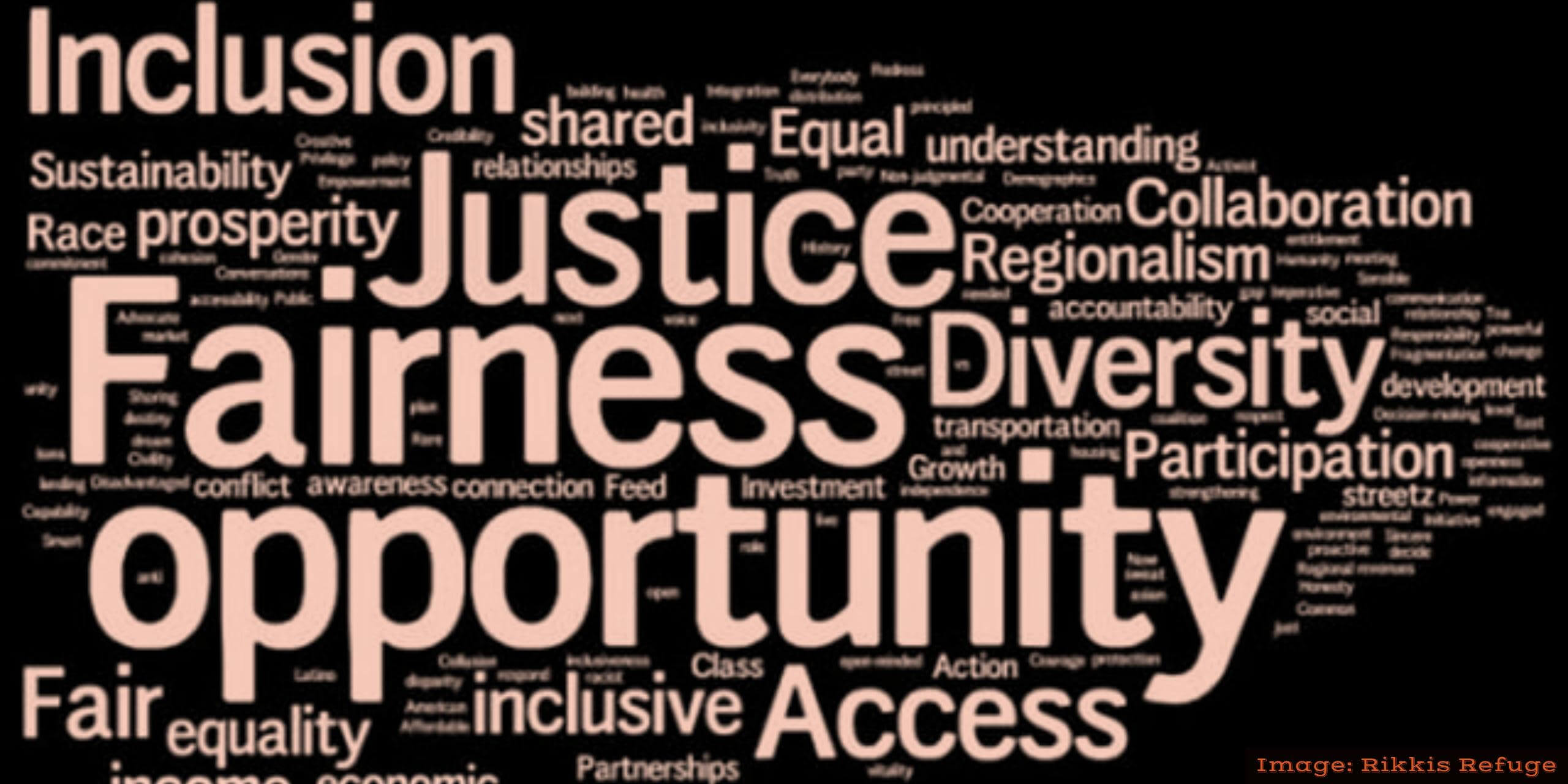Social Justice Strategies

Image: https://pushingtheedge.org/social-justice-in-education/
Social Justice Strategies
To achieve social justice leadership here are some strategies outlined in the Bettez & Hytten (2011) and Wang (2018) articles could be adapted for a business school:
- Democratizing participation in decision-making:
- Ensure there is fair representation in key decision-making processes. While many decision committees may include members from all levels (students, professors, staff), in my experience, these groups are often not diverse and thus not everybody can voice their opinion or have an influence.
- Recruit and supporting diverse students, professors and staff that fairly represent current Canadian population with the purpose of creating a rich, multi-cultural environment where everybody can flourish. As for students, this also includes providing scholarships to students from marginalized groups. In my experience, business students tend to be very homogenous and thus reluctant to act in a different way.
- Transformation and ethical/moral leadership:
- Include social justice in the school’s mission statement as a guiding star for the design of the curriculum, research and engagement with other stakeholders. In this way, social justice becomes present in every activity and it’s not seen as an optional approach.
- Clearly define the social justice strategy and agenda, outlining what are the responsibilities of every party at different levels and the ways/spaces in which everybody can voice their concerns or opinions.
- Empower students to act as social leaders by allowing them to voice their concerns on social justice (through surveys, forums or special units) inside and outside the classroom and allowing them to have a say in adapting the curriculum to more social oriented one. For example, professors can use a culturally-sustainable approach and ask students to have a voice in final projects or assignments that promote social justice.
- Social Justice Practice:
- Engage students, professors and staff in on-going training (on equity, inclusion, democracy, social justice and personal bias) to learn and unlearn habits that perpetuate social injustice and especially, ways create change. Most social justice training focuses on introducing theory, however, as referred in the articles, many of us still do not know how to allocate resources more equitable, how to create fair competition, recognize and celebrate all cultures, and thus we tend to perpetuate the same practices.
- Create periodical forums/spaces to discuss the meaning of social justice practice, current practices and how to address social injustice.
- Measure key metrics on social justice initiatives and ask for feedback regarding areas of opportunity(surveys for all students, professors and staff and interviews with marginalized and or diverse groups at all levels), present results and actionable plans.
- Foster positive and reciprocal relationships with families and the community:
- Include social justice business projects with local business, government and non-profit organizations/
- Offer social justice training to parents and community.
- Create events, like a “social justice fair” where students explain social justice practices to local business and authorities
Hytten, K., & Bettez, S. C. (2011). Understanding education for social justice. Educational Foundations (Ann Arbor, Mich.), 25(1–2), 7–24.
Wang, F. (2018). Social Justice Leadership—Theory and Practice: A Case of Ontario. Educational Administration Quarterly, 54(3), 470–498.

Comments
Post a Comment